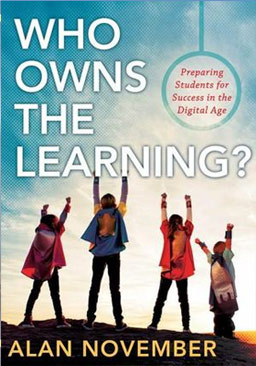
For many educators, helping students direct their own learning is a priority. Educator and author Alan November, who has been talking about ways to get students to own their learning for years, draws on his experiences as a teacher, principal and education consultant to tell stories about some of the ideas he sees as integral to education.
November joined Steve Hargadon in a discussion of his new book Who Owns the Learning: Preparing Students for Success in the Digital Age, stressing the importance of global collaboration and the role of technology in making it all possible. Here are a few highlights from their discussion.
SCHOOL STRUCTURE CAN HOLD STUDENTS BACK
School often means rules and regulations that can seem unrelated to the broader goals of education. Students are told to sit down, be still, show up at specific times, and demonstrate knowledge in ways that have nothing to do with the real world. As a case in point, November talked about when he started his teaching career at a reform school for boys where the administration took rules seriously. He discovered that one of his students had been breaking into his classroom to practice coding at night. The student showed a rare passion for a subject that wasn’t even being taught at that time, stayed focused on the task and was self-directed – qualities normally valued by educators. At a time when few people knew even how to use a computer, this boy was teaching himself to code. But none of it mattered to an administration more concerned that he’d broken the rules.
November pointed out the similarities between learning to code and the movement toward instant feedback with some of the newest ed tech tools: engineers can test a string of code to see if it works, retrace steps to figure out where it went wrong if it doesn’t. In the same way, many blended learning methods provide the same kind of instant feedback into the classroom, allowing both the learner and the instructor to understand where to shift direction to gain understanding. November says that instant feedback trend should be embraced as a powerful learning tool.


 TECHNOLOGY RECREATES THE ONE-ROOM SCHOOLHOUSE
TECHNOLOGY RECREATES THE ONE-ROOM SCHOOLHOUSE